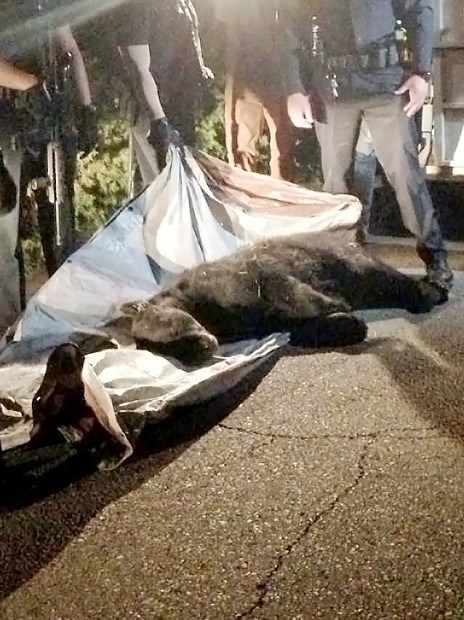We have much more to do and your continued support is needed now more than ever.
Bears at the Back Door in Albuquerque
When it comes to living in the West, it’s all about water. When there isn’t any, we start to see problems: bigger and more frequent wildfires, fights over water rights, and—for wildlife—the increased stress of food scarcity. For two years, New Mexico has seen below-average rainfall and mountain snowpack. Some summer thunderstorms have improved the situation (and outlook), but the state has a big moisture deficit to overcome.
Near Albuquerque, the local black bear population has been struggling to survive during one of the worst droughts in New Mexico history. On Tuesday, my friend posted photos on Facebook showing a bear that was tranquilized by law enforcement and wildlife officials in her neighborhood.

In 2012, also a very dry year, no nuisance bears were trapped and relocated from the Sandias. So far this year, nine bears have been caught and moved elsewhere.
In other words, about 30 percent of the estimated bear population has come into contact with humans this year, .
The Wildland Urban Interface
As we encroach further into wilderness areas, our interactions with the natural world will continue to increase (here’s a timelapse of Albuquerque’s growth). For the same reasons historic wildfires threaten entire communities, sightings of wildlife will become more common as the boundaries between their habitat and ours disappear. Even more challenging is the forecast for climate change and the ways it will fuel extreme weather—as outlined in our recent report, Wildlife in a Warming World.
David Mizejewski, a naturalist with National Wildlife Federation, said we should prepare for more of these instances in the future:
“As our actions continue to impact habitat for these bears, encounters like this will sadly become more and more frequent. At the same time, some simple actions on our part can help avoid conflict with bears that wander into cities and towns. Keeping trash indoors until the morning of pick-up, feeding pets inside, and removing bird feeders that bears are using as a food source can eliminate potential bear conflicts non-lethally.”
While individual communities will continue to struggle with solutions to these situations, we can all make a difference for wildlife fighting for survival in a changing world.
![]() Support action to limit carbon pollution and help wildlife like black bears and polar bears that are feeling the heat.
Support action to limit carbon pollution and help wildlife like black bears and polar bears that are feeling the heat.





















